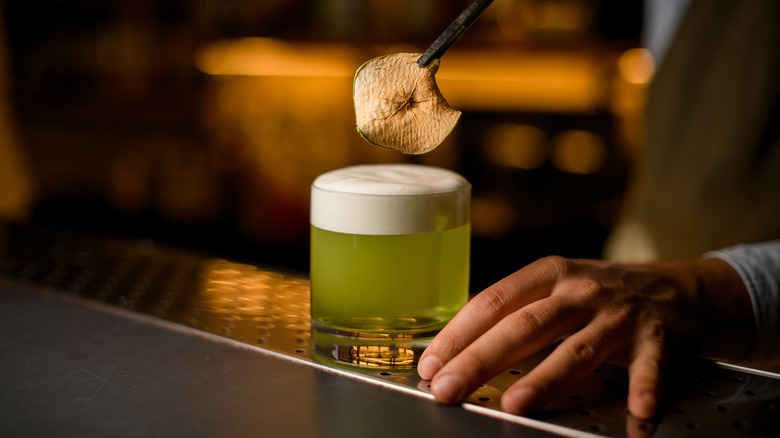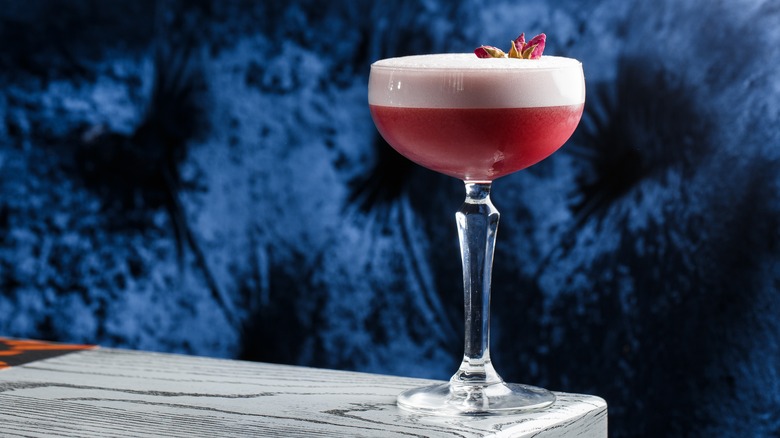Does The Foam In Cocktails Actually Serve A Purpose?
If you've visited a cocktail bar recently, you may have noticed some frothy, foam-topped drinks being served. Though foamy drinks have been around for awhile, a resurgence of the fluffy element is driving some drinkers to wonder whether that creamy, velvety topping is simply for aesthetic value or if the textured layer has any culinary benefit.
When molecular gastronomy became en vogue and European chefs began creating dishes with more experimental textures and tastes, bartenders — particularly those shaking up cocktails — took notice, and canisters used to make whipped cream began finding places behind bars at more adventurous establishments. At Drastic Measures, a James Beard semifinalist for Outstanding Bar, reconstructed marshmallow foam tops a drink made up of graham cracker fat-washed rum, coconut water cold brew, and chocolate bitters; Aluna garnishes a cocktail made from cherry, amaretto, lemon, and cranberry with a cola foam.
Now that bartenders have new ingredients and tools to play with — Liber & Co. makes foam not just out of egg whites, but with juice from chickpeas, saponins, and gum syrup — serving drinks with unique textures has added a playful element to cocktails. Yet as tempting as it might be to go wild with the foam, beverage director Edwin Cruz instructs Tales of the Cocktail, "Foam should complement, contrast, enhance, or balance flavors in a drink." In other words, the foam itself shouldn't be the focus of a recipe.
Playing with texture
"Foam provides the designer of the cocktail a way to highlight an ingredient without making it super strong," Drink Masters finalist Kate Gerwin told Punch. While bartenders around the world have been shaking up egg whites into drinks for over a century, adding foam to the surface of a cocktail can enrich the drinking experience without extra shaking and effort from the bartender.
Regardless of how the foam of the drink is made, the overall finish of the drink must be carefully considered. Because foam brings a visual element to cocktails, bartenders have more elements to play with, yet foam should have a specific reason it is used in a recipe. Egg whites can add a funky smell to recipes, so other ingredients must account for the aromatic element. As a result, bartenders are experimenting with different ingredients to create foam, such as sea salt and vinegar and prickly pear and sugar water, but the ingredients can impact the texture and how long the foam will maintain its shape.
If you're trying to get creative and make your own drink foam at home, you'll want to experiment with recipes to nail the desired texture and taste of your cocktails.

